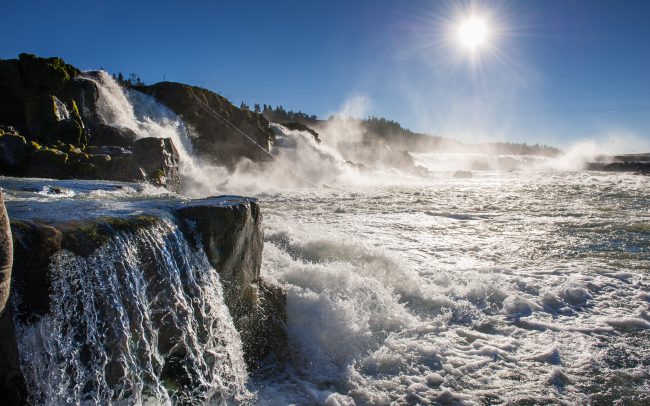Stillwater Sciences is supporting the Eugene Water & Electric Board (EWEB) in its relicensing of the Carmen-Smith Hydroelectric Project, located on the McKenzie River in the western Cascades of Oregon. EWEB is using a collaborative approach with various stakeholders within a framework of the Traditional Licensing Process.
As primary consultant to EWEB, Stillwater completed documents relating to all aspects of the relicensing, from the Initial Consultation Package, to the final FERC license application and Section 401 water quality certification under the Clean Water Act. So as to provide the client with the most scientifically-defensible and relevant technical study results, we designed detailed investigations of the potential impacts of the project. A few of these studies are outlined below.
Fish: Population dynamics of bull trout and spring Chinook salmon
We developed a set of quantitative models that identified factors affecting bull trout and spring Chinook salmon populations within the Project area. Extensive field studies were conducted using numerous stationary PIT tag antennas to quantify population sizes, life history, habitat use, and survival for input into these models. Our results were used to evaluate alternative management scenarios, including habitat enhancements, hatchery operations, angling regulations, and fish passage issues.
Wildlife: Elk habitat assessment
Because elk habitat can be impacted by vegetation management and road use under normal Project operations, Stillwater Sciences evaluated current and future habitat quality for elk emphasis areas, as designated by Willamette National Forest (WNF). Using aerial photographs, GIS layers from the USDA Forest Service, and field verification, we were able to model current and projected future conditions within specified emphasis areas, to aid in developing any necessary measures to minimize impacts to elk habitat.
Plants: Botanical surveys and vegetation management
Stillwater Sciences conducted comprehensive field surveys for special-status and culturally significant plants as well as mapped targeted weed populations. These surveys served as the basis of our vegetation management plan, which guides rare plant protection, weed treatment recommendations, and restoration and enhancement priorities. As part of this work, we are conducting annual surveys of three rare plant populations, including two rare ferns and a rare lichen; information on annual baseline variability will inform the long-term management of each species. In addition, we are collaborating with agencies and local tribes to enhance culturally significant and other plant species important to big game along targeted transmission line segments.









